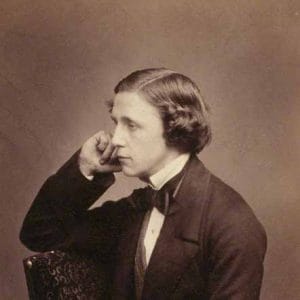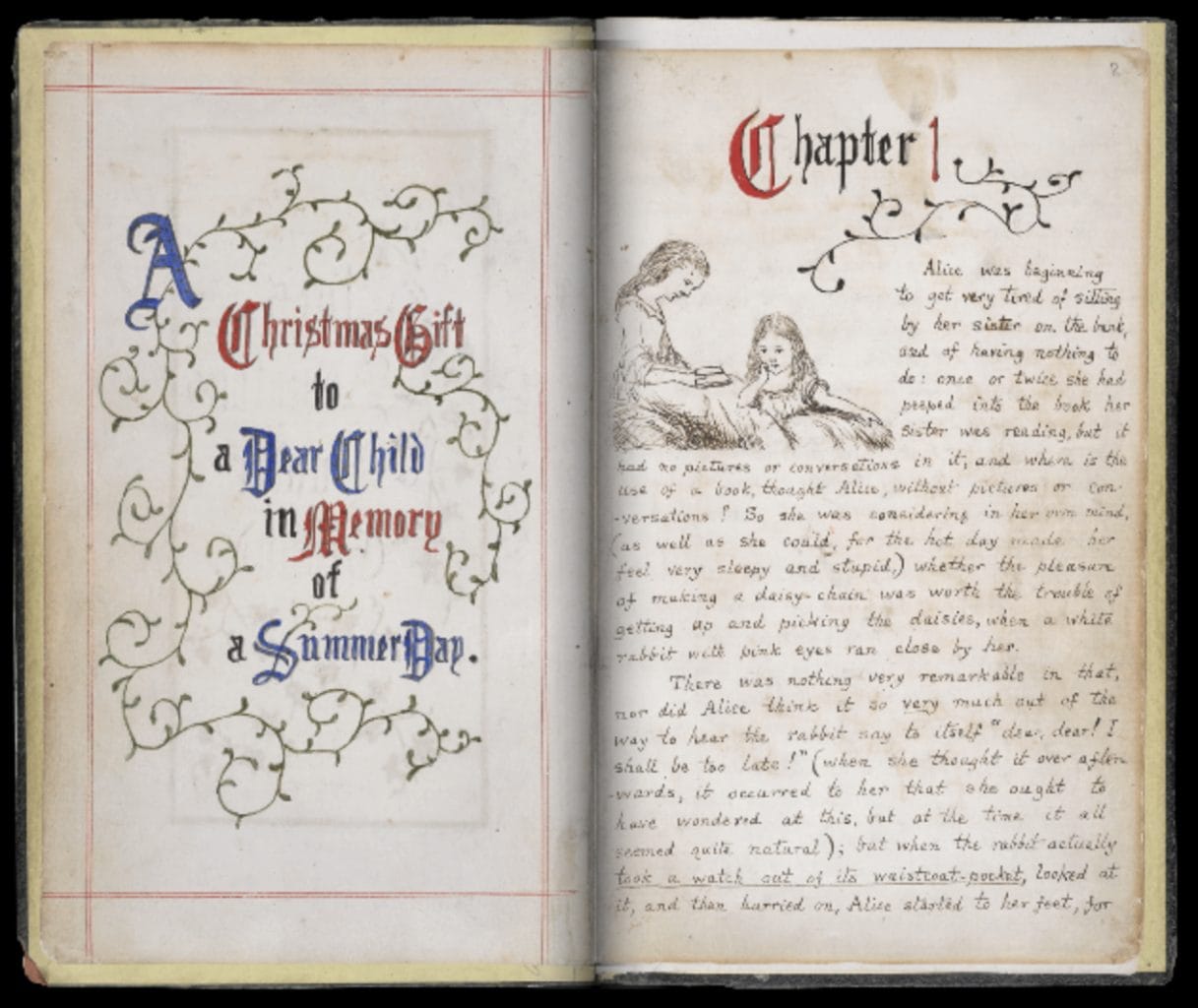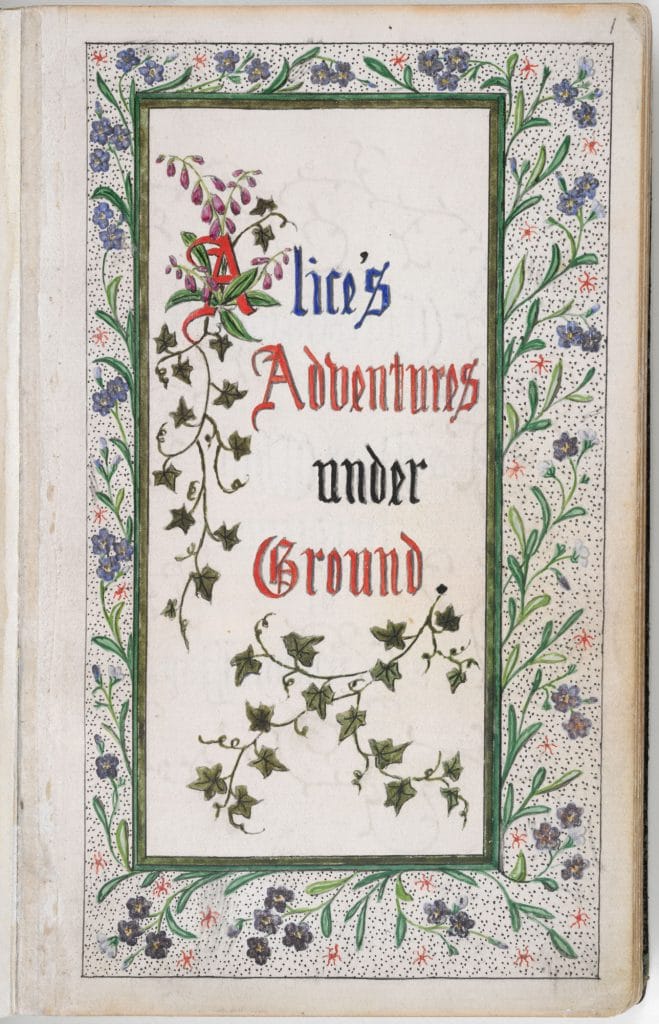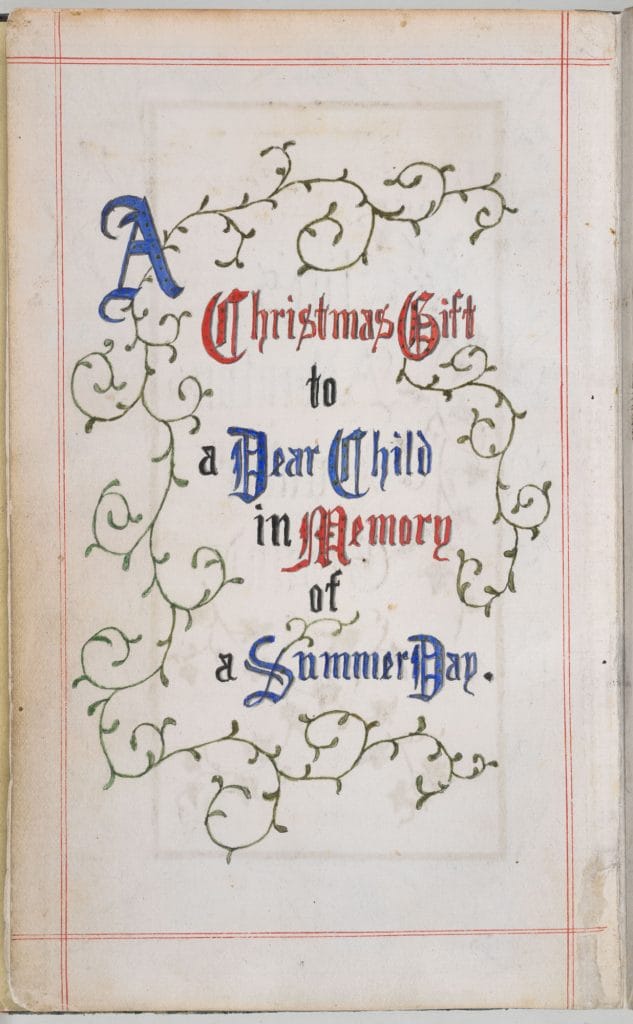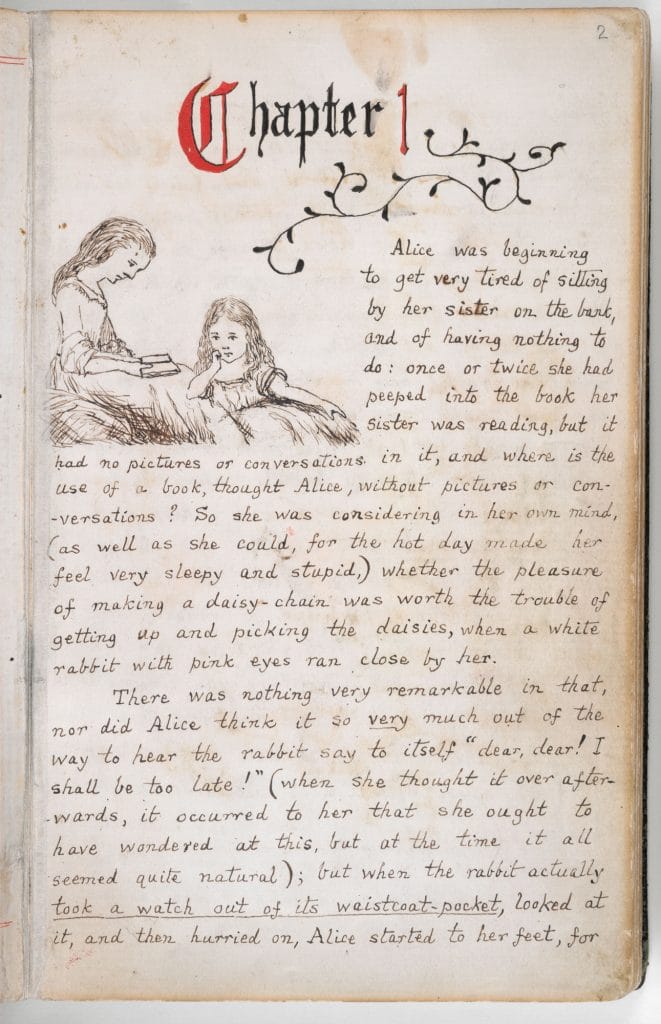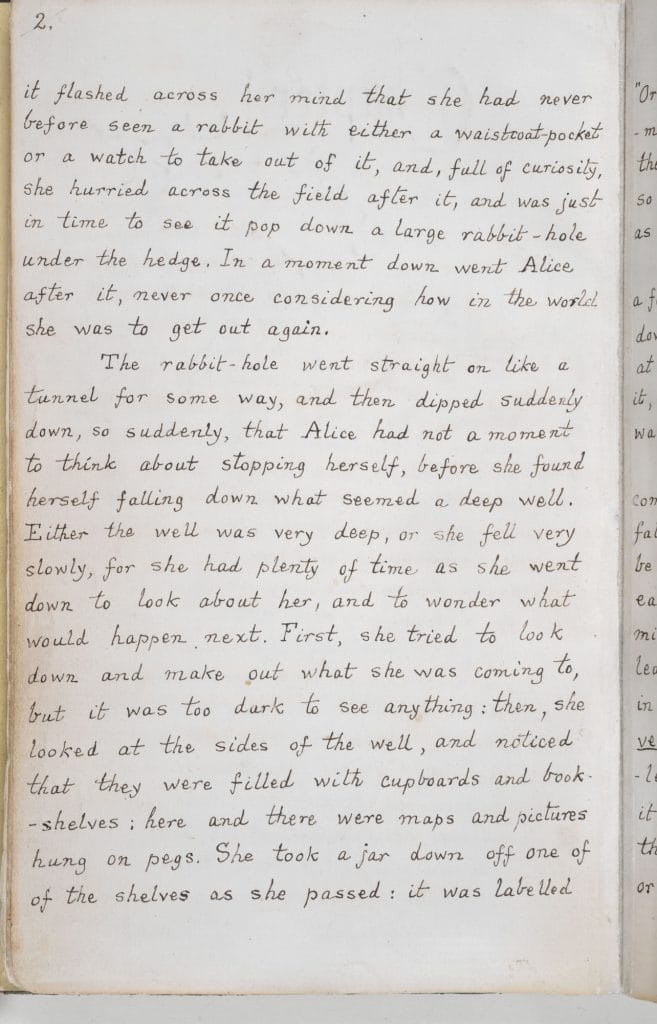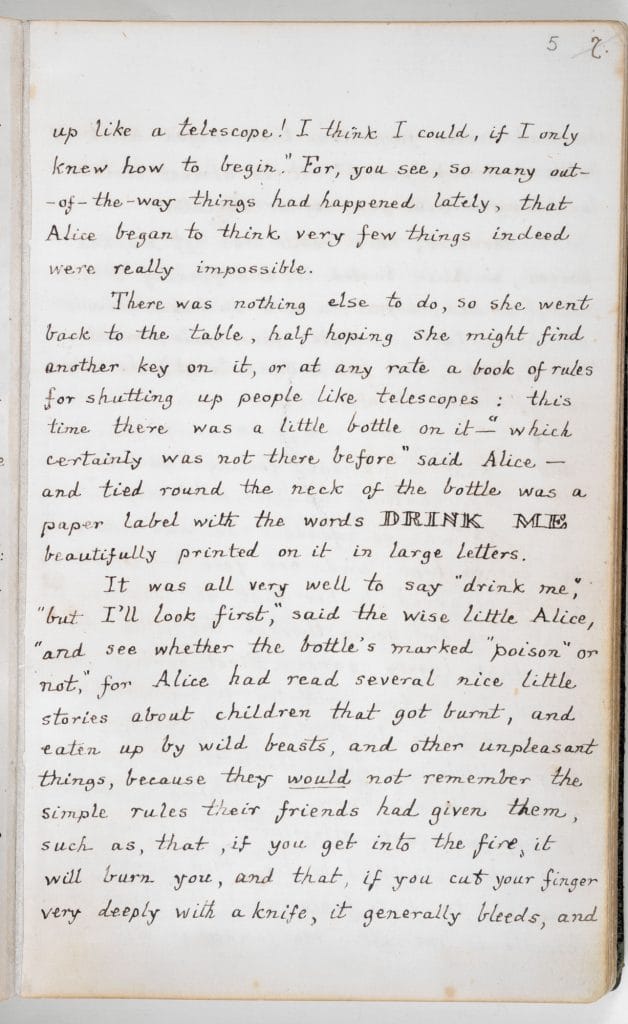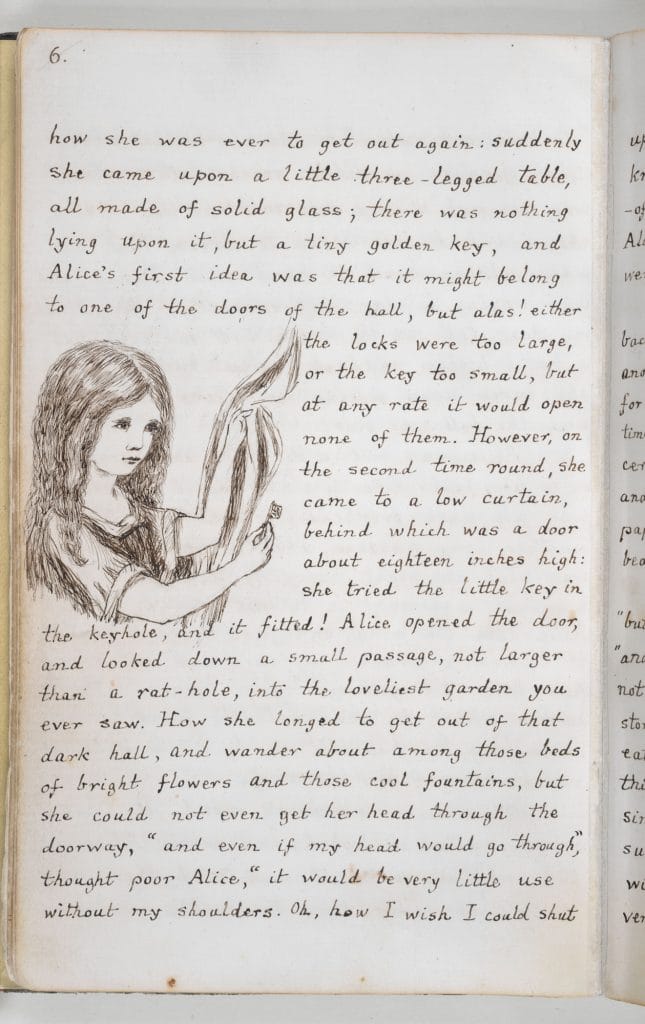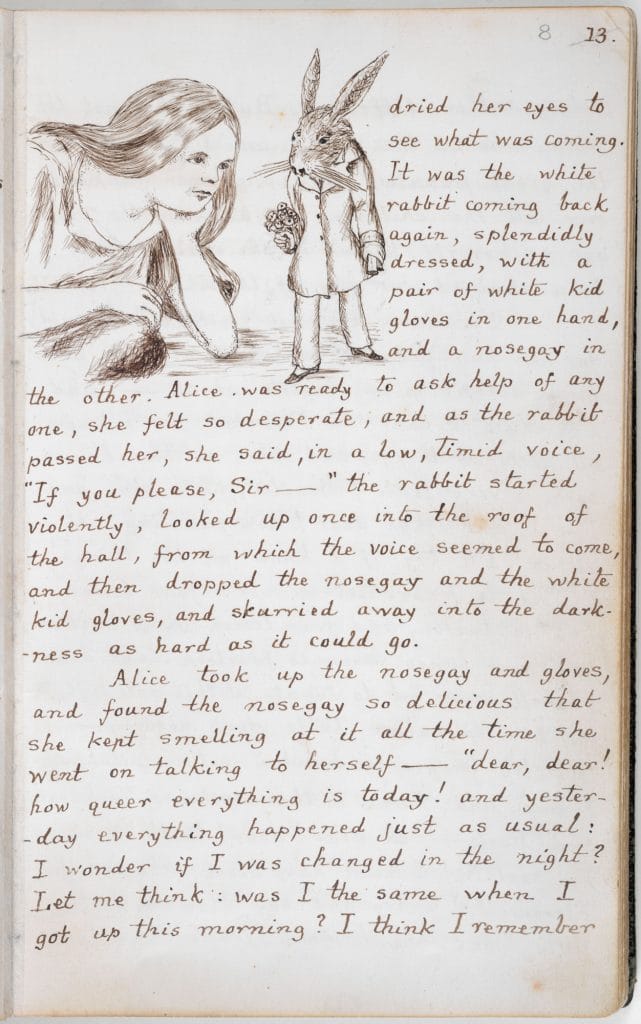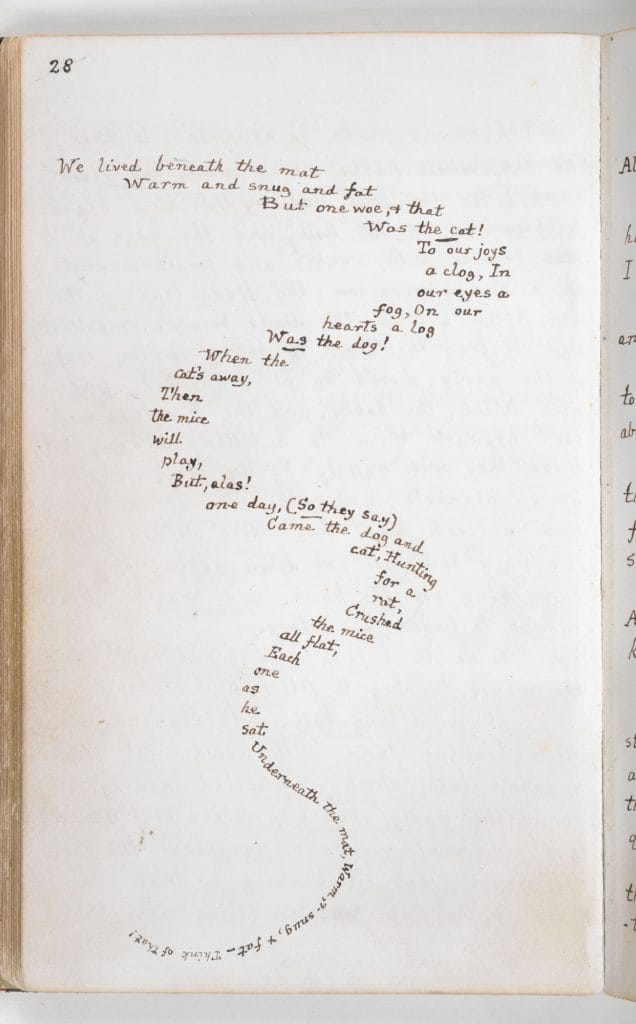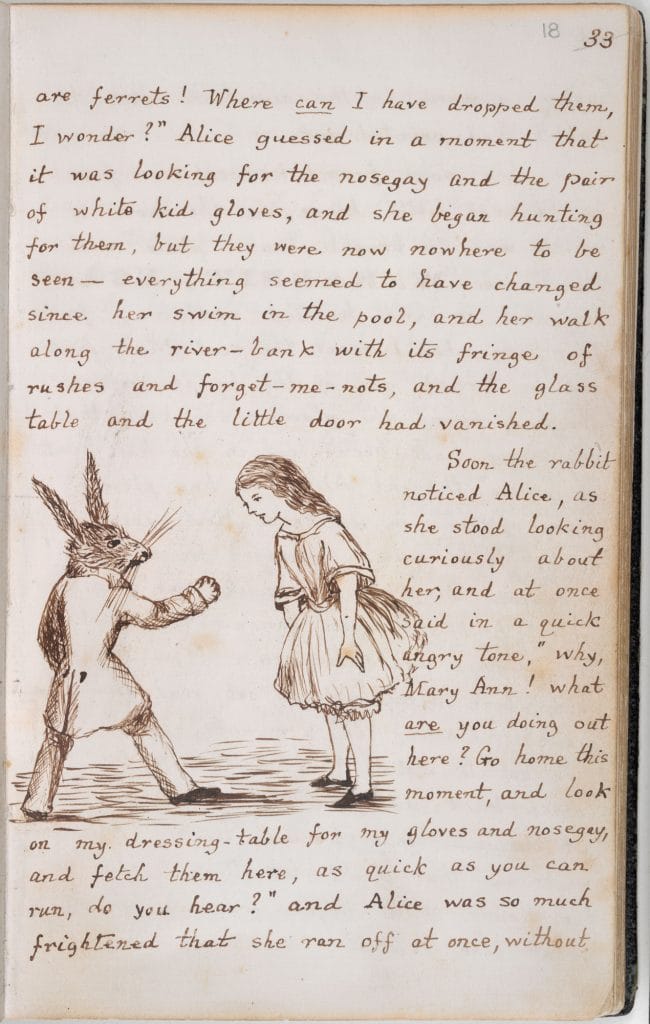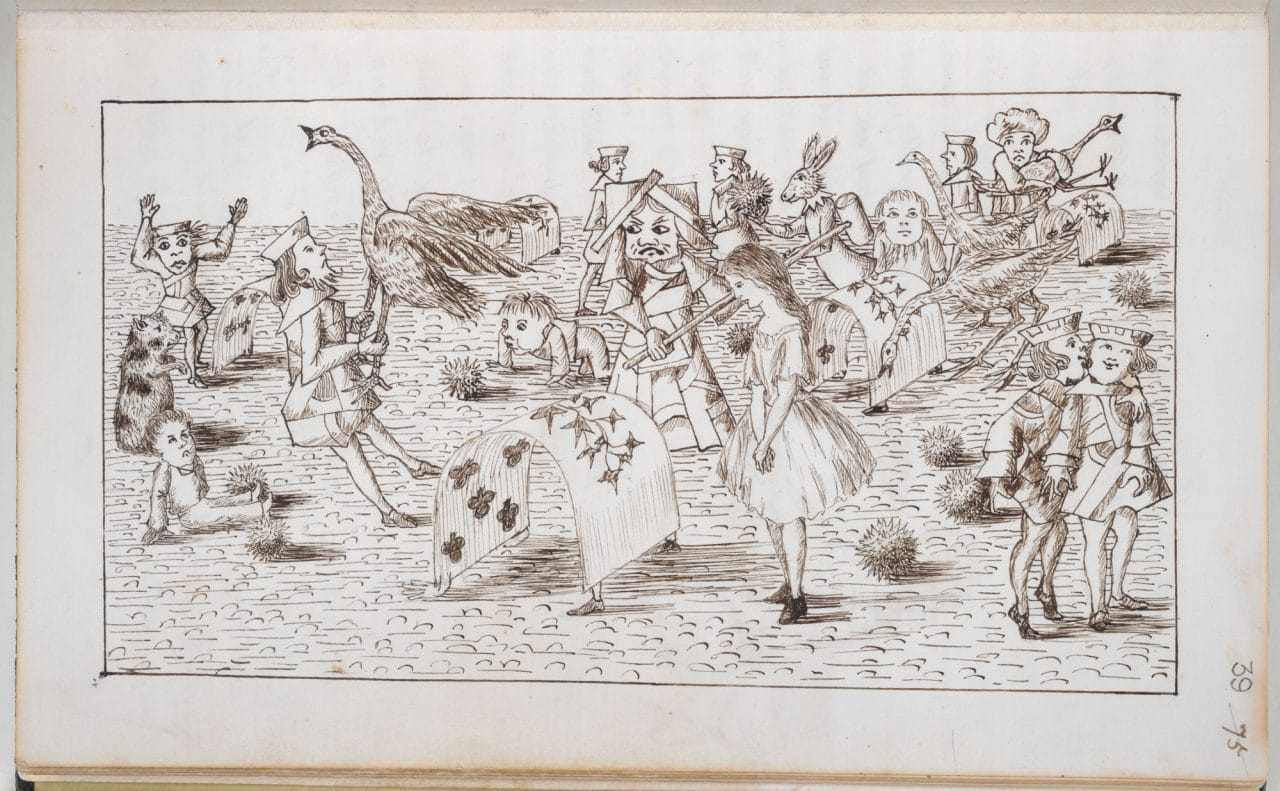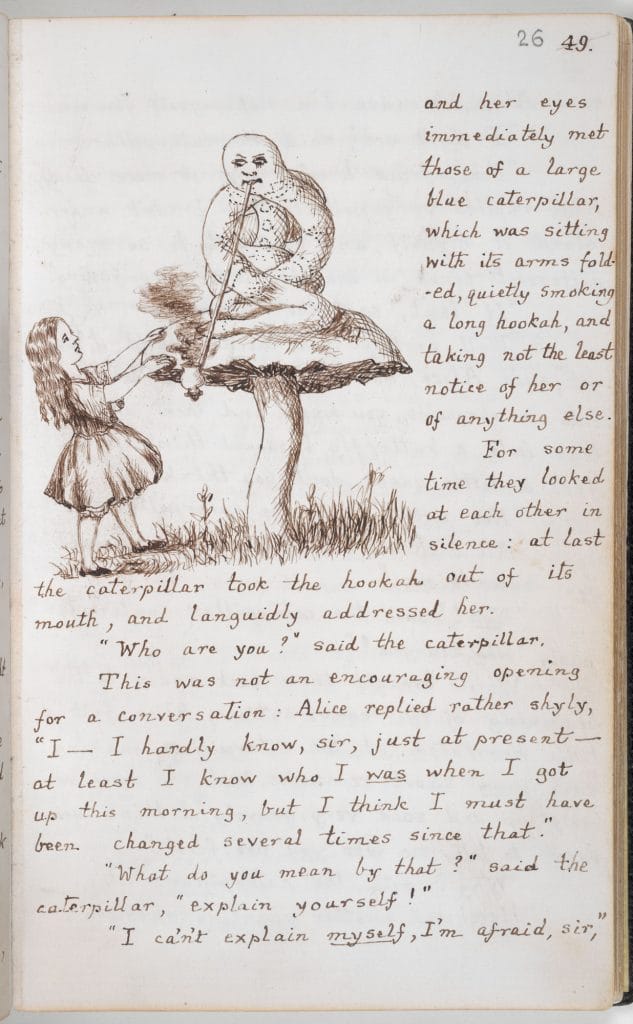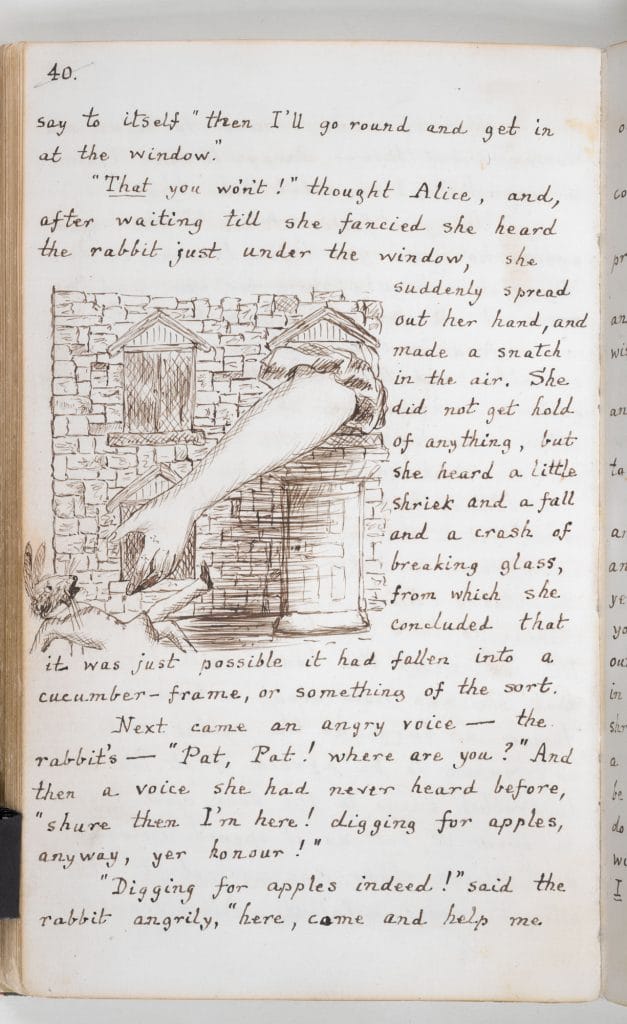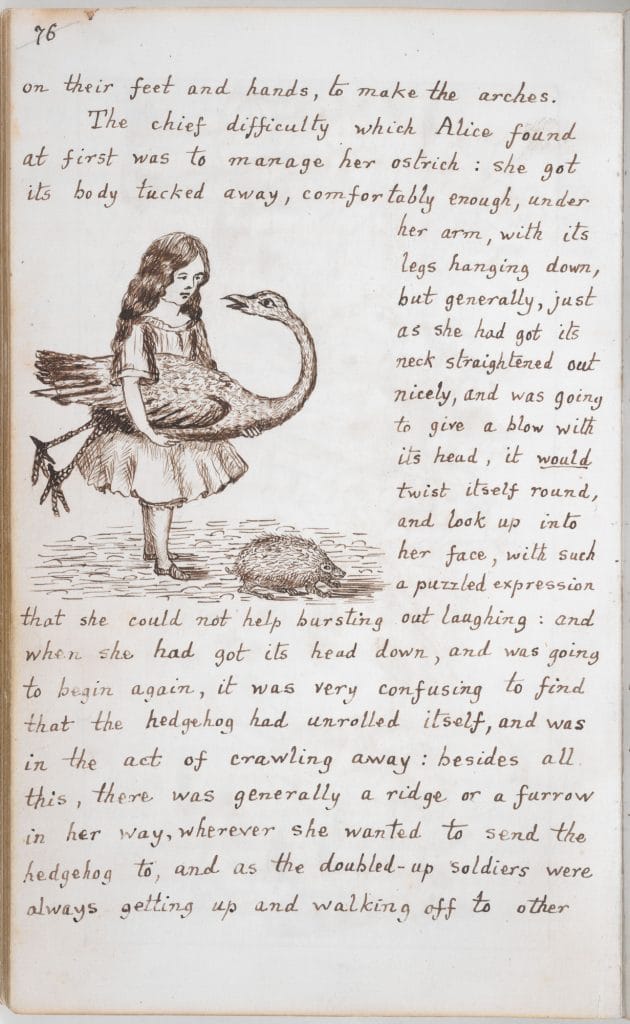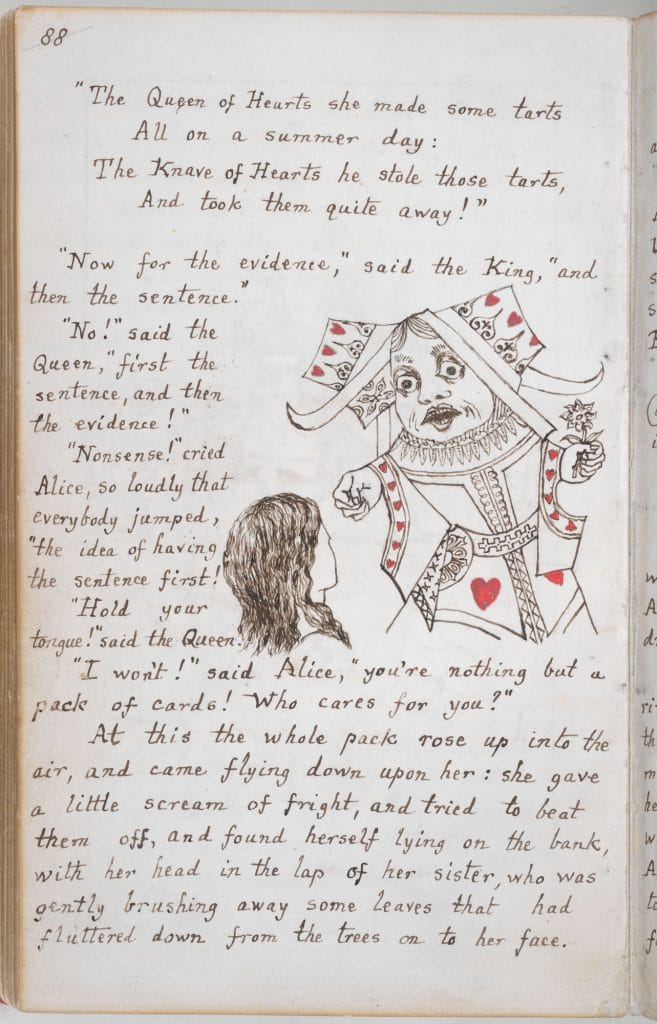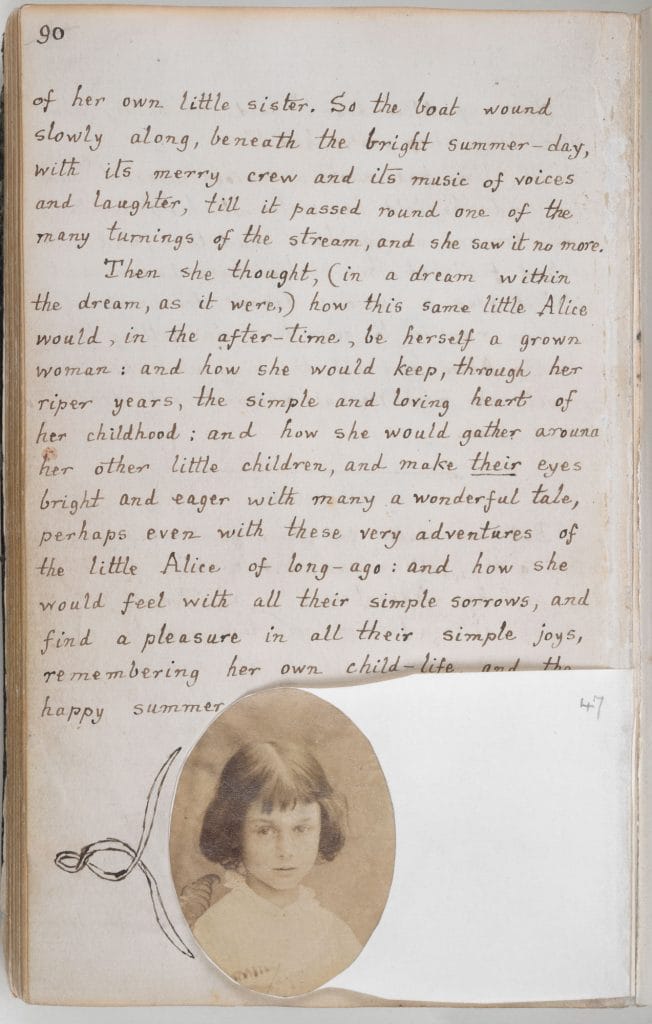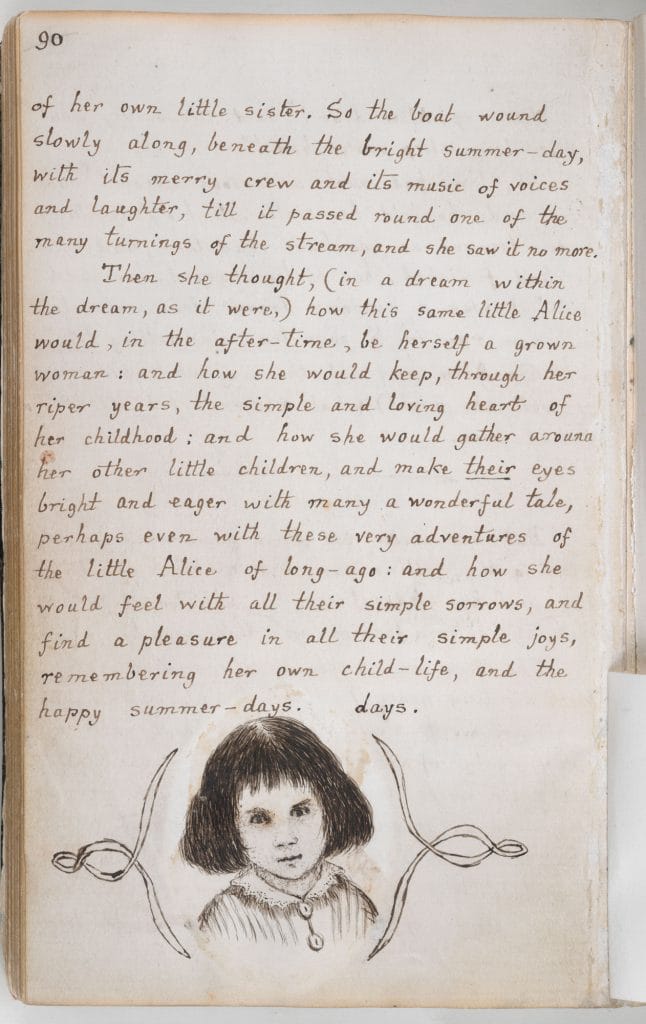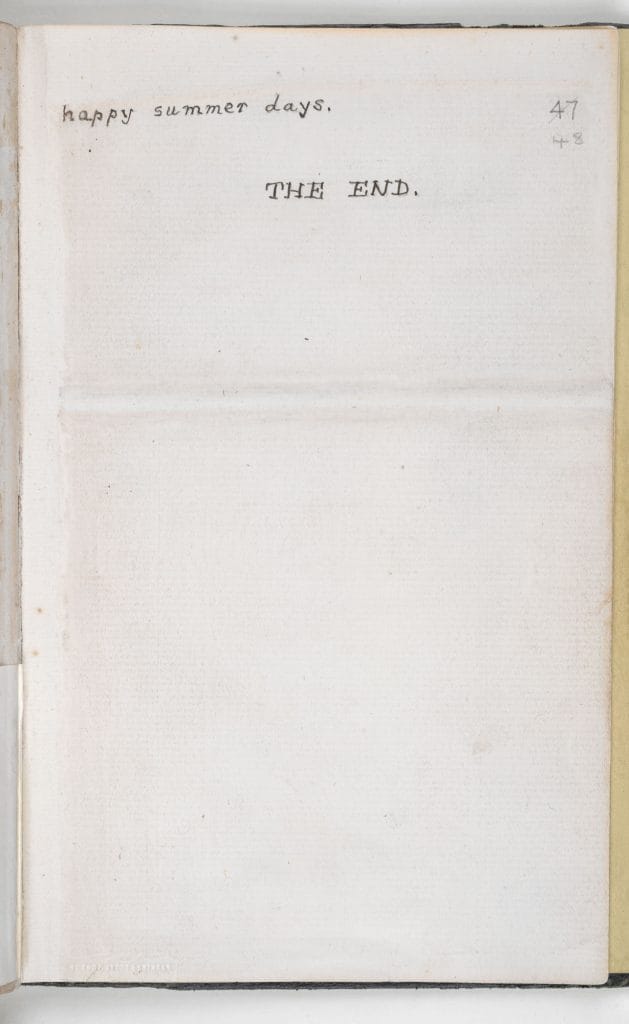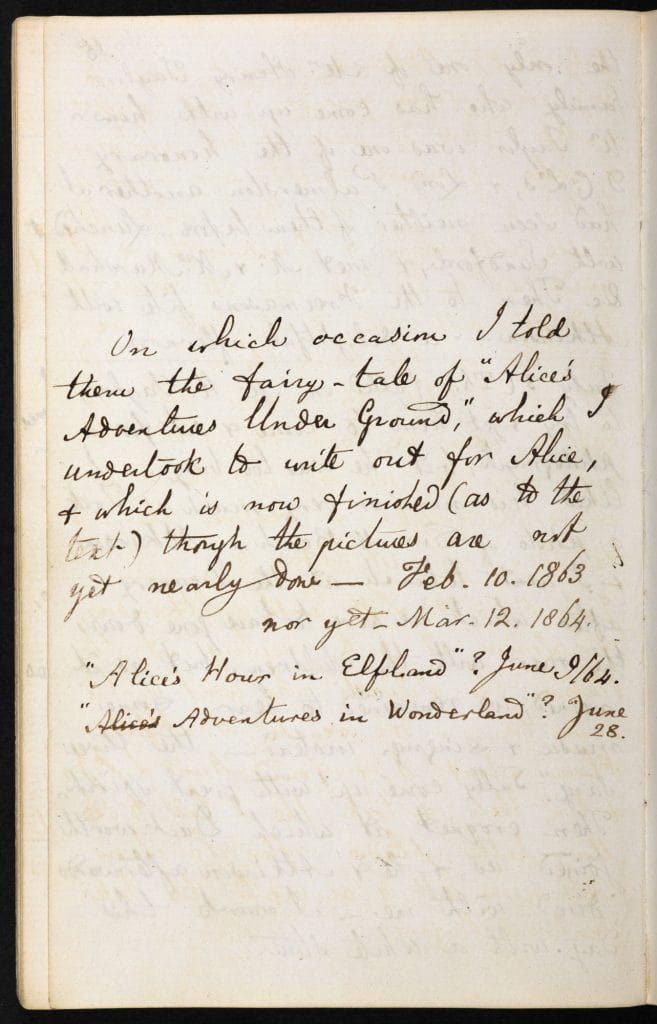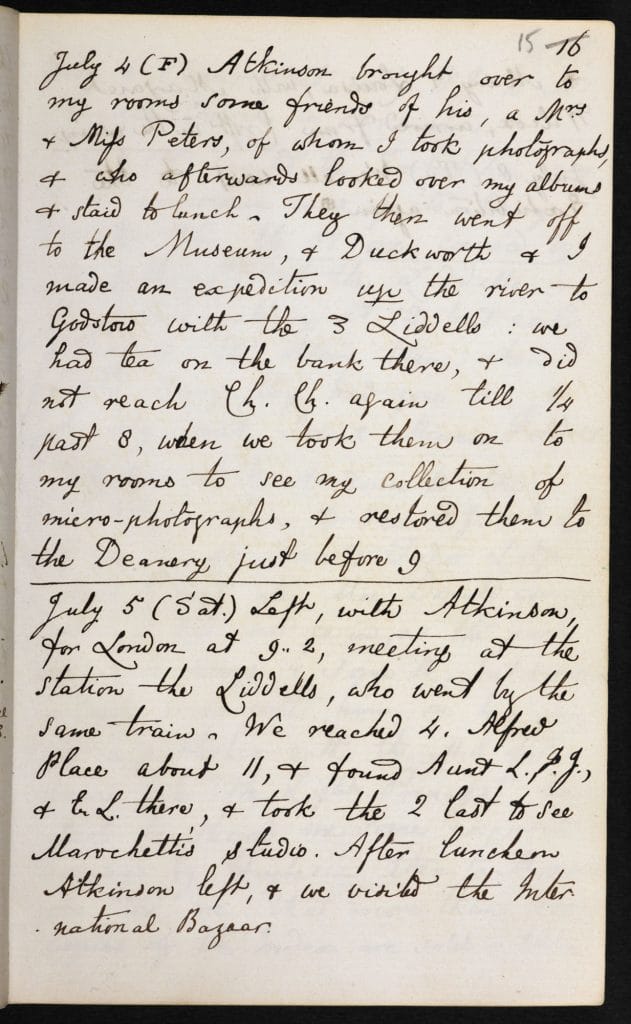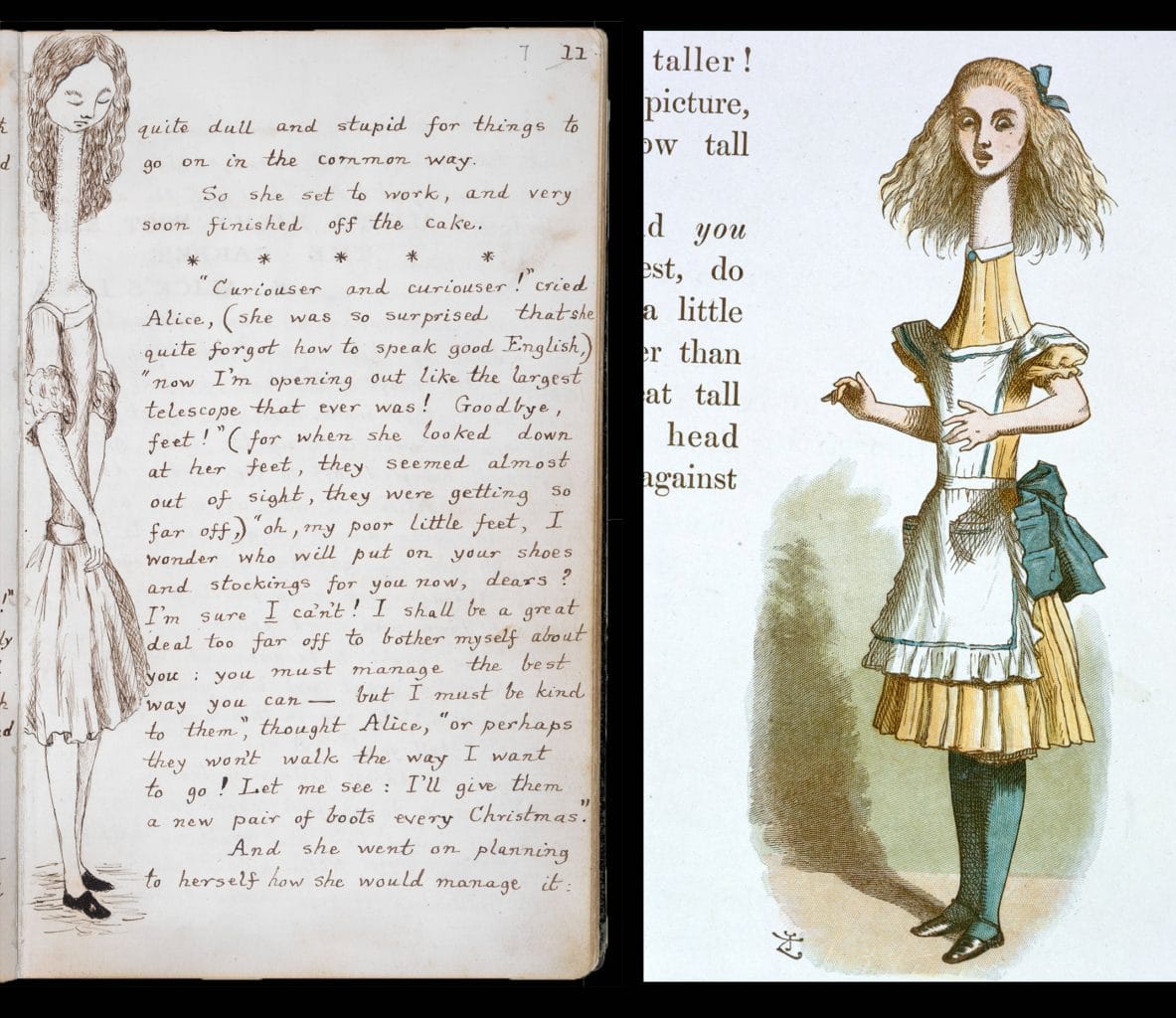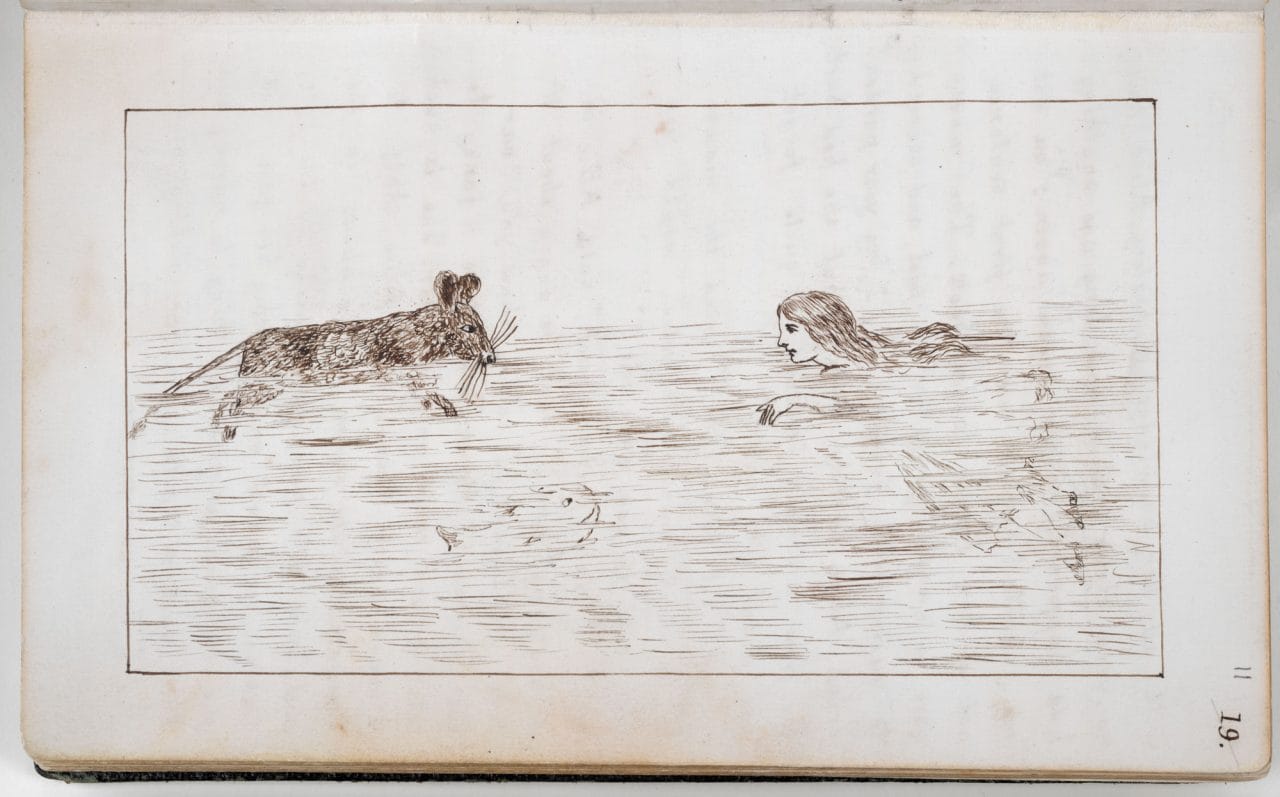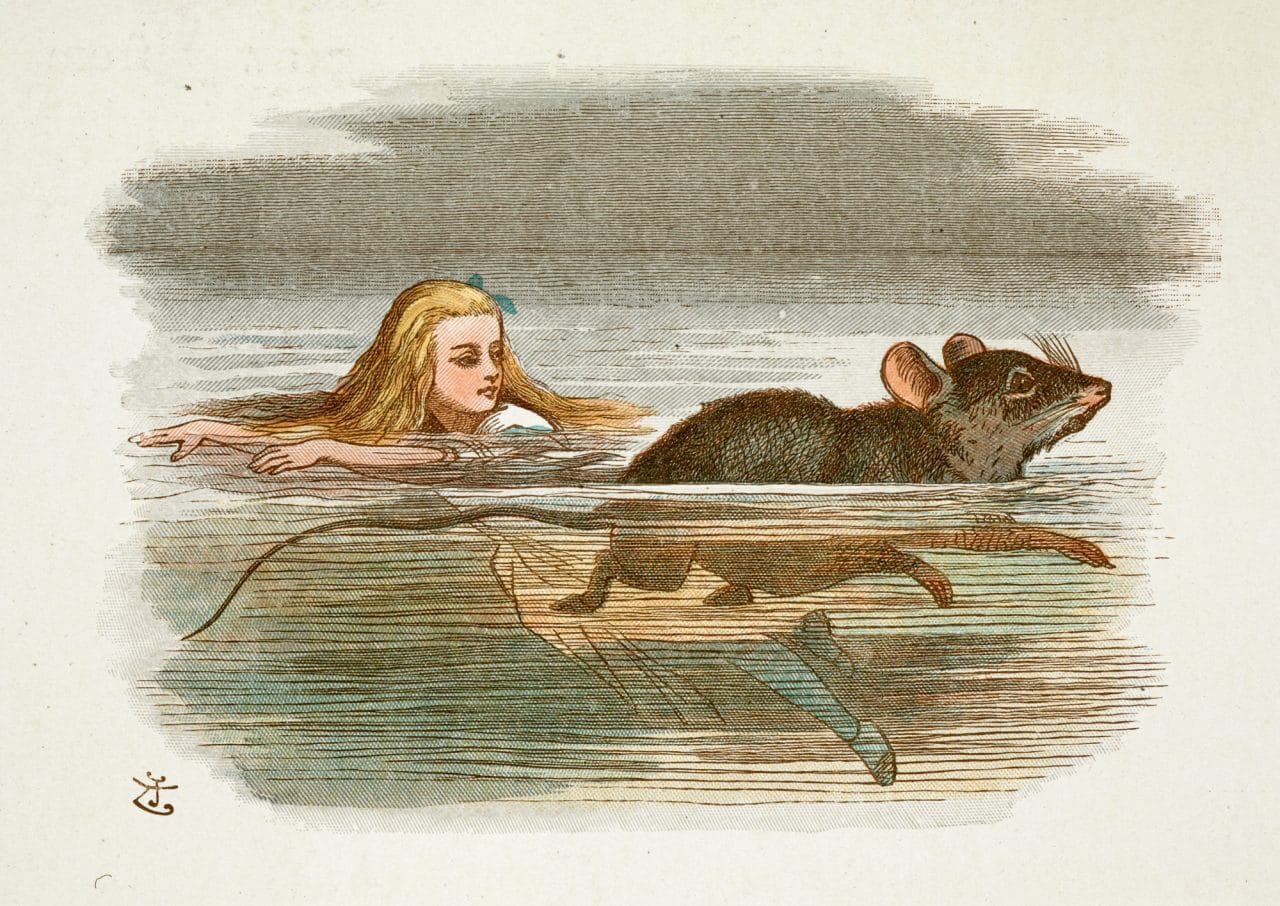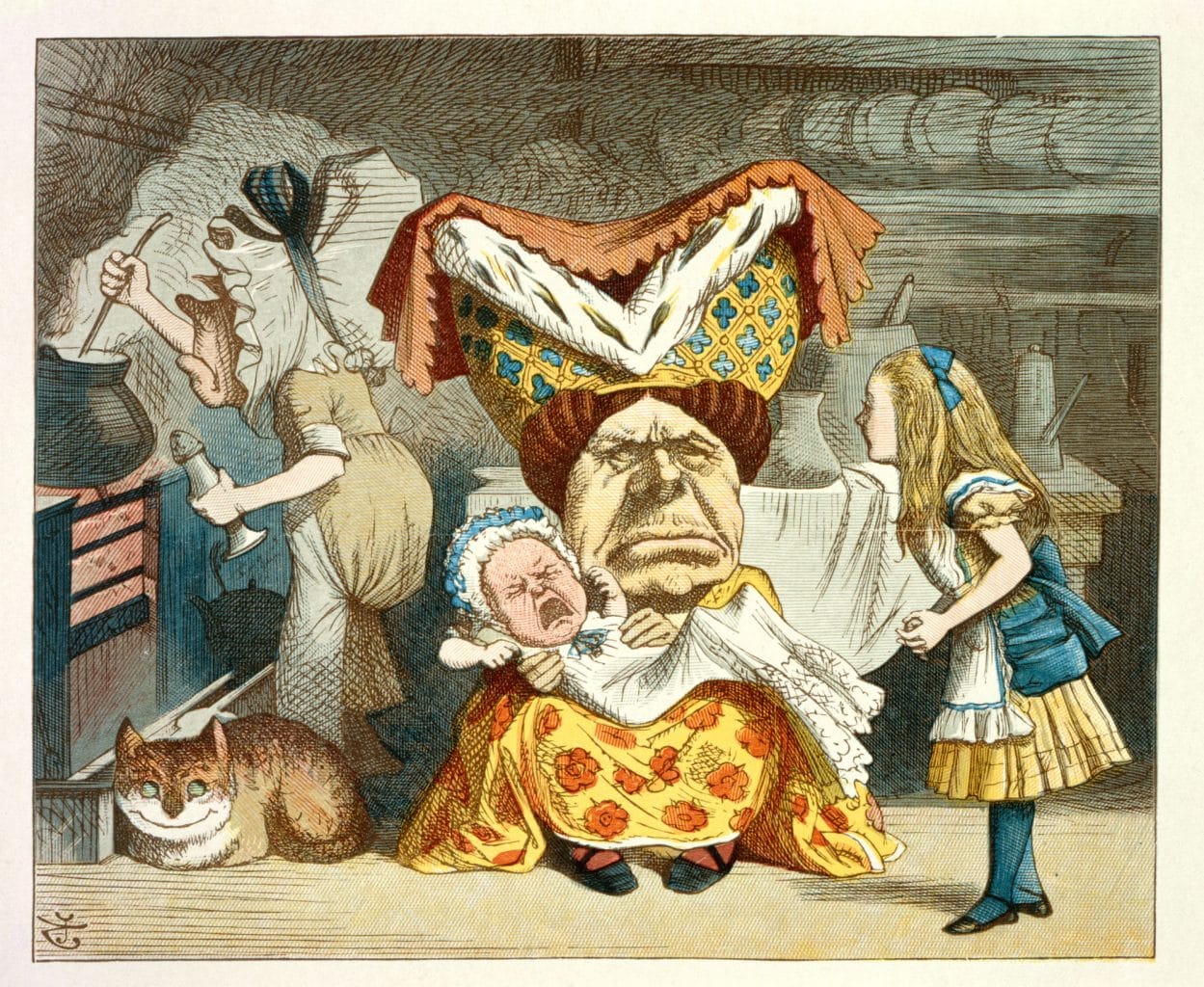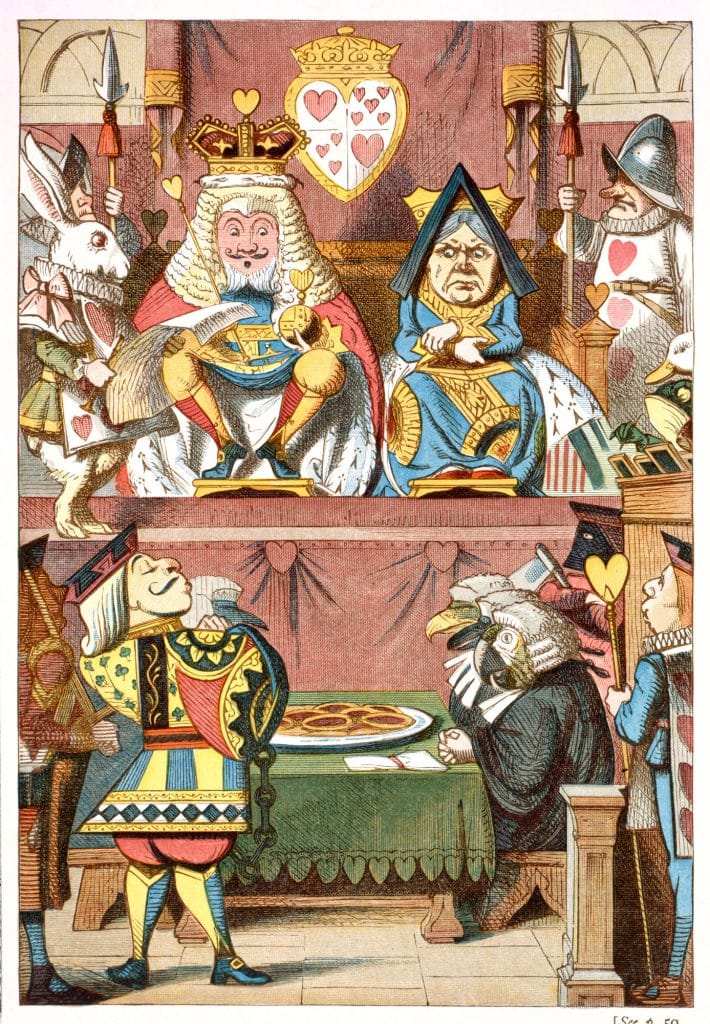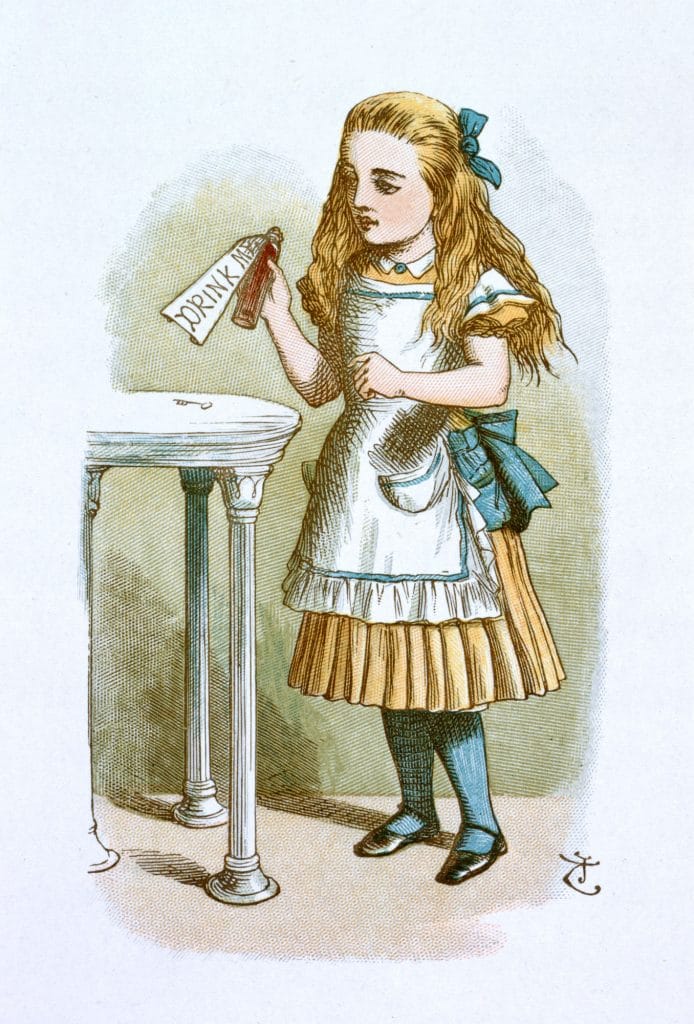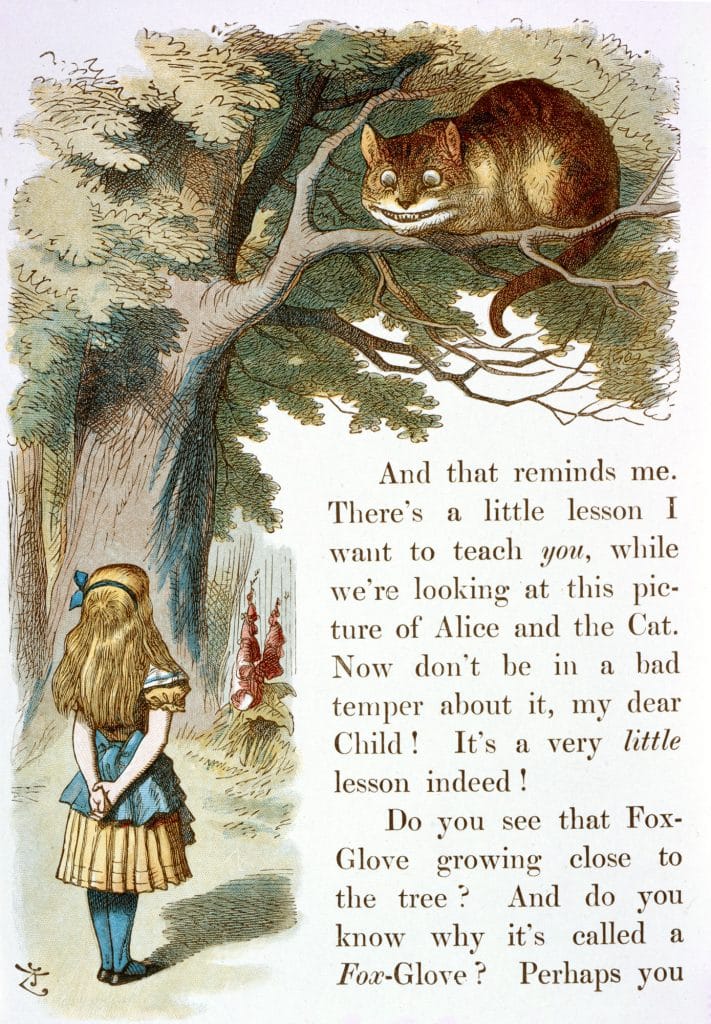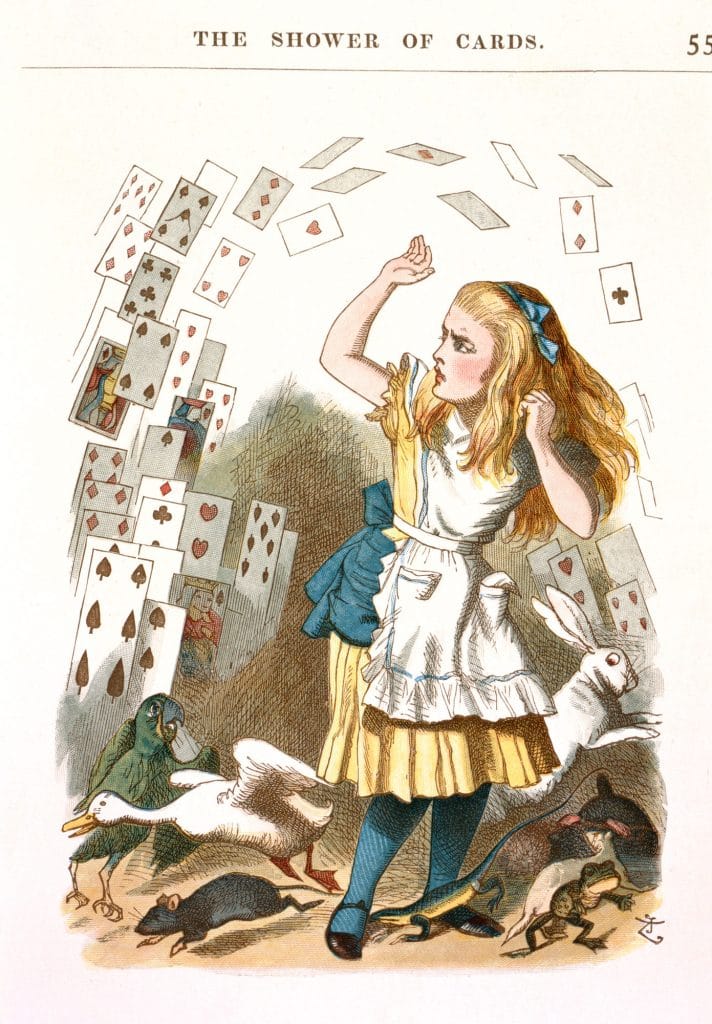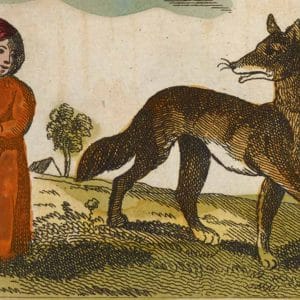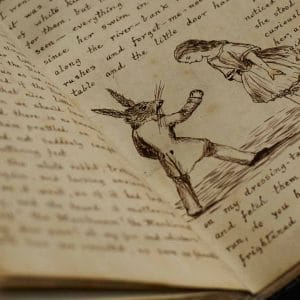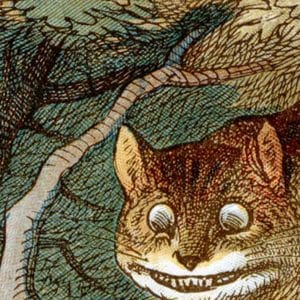
Lewis Carroll’s Alice’s Adventures in Wonderland
出版日期: 1865 类型: Children's Literature
Alice’s Adventures in Wonderland is one of the most famous and enduring children’s stories of English literature. It tells the story of a girl named Alice who pursues a white rabbit with a pocket watch and falls down a rabbit hole into a world where nothing is quite as it seems: creatures talk, logic confounds and language contradicts itself, making nonsense seem far more sensible than sense.
The real Alice
The tale that would become Alice in Wonderland was first told by Charles Dodgson, aka Lewis Carroll, to Alice Liddell and her sisters on a summer’s day in 1862. He entertained the children on a boat trip with a story of Alice’s adventures in a magical world entered through a rabbit hole. The ten-year-old Alice was so entranced that she begged him to write it down for her. It took him until February 1863 to write out the whole text, taking great pains to write in neat ‘manuscript print’, designed for the young Alice to read. Her sisters also made an appearance in the story: the three little sisters in the Dormouse’s tale, Elsie, Lacie and Tillie, are plays on the other Liddell sisters’ names.
Written in sepia-coloured ink and including 37 pen-and-ink illustrations (and a coloured title page), the manuscript was presented to Alice as an early Christmas present on 26 November 1864. Dodgson was not an artist and had some difficulties with the illustrations; he pasted a photograph of Alice over a drawing of her that he had included. The original drawing would not be seen again until it was uncovered in 1977. The photograph is now attached to a paper flap, enabling readers to see the illustration underneath. This manuscript is one of the British Library’s best-loved treasures.
Alice’s Adventures in Wonderland, Chapter 1 read by David Horowitz, Jo Wyatt and full cast. Courtesy of Naxos Audiobooks.
Under Ground to Wonderland
When Dodgson was encouraged by friends to publish his manuscript, he made some changes to the story, removing some of the family references included for the amusement of the Liddell children and creating two additional chapters. These new chapters introduced characters that many readers most associate with Wonderland – the Duchess, the Cheshire Cat, the Hatter and the March Hare. He also made the decision to publish under his pseudonym, Lewis Carroll, which he had previously used when publishing literary (rather than mathematical) work. Dodgson created his famous pen name from his own: ‘Carroll’ from ‘Carolus’, the Latin for ‘Charles’, and ‘Lewis from ‘Ludwig’, the German for ‘Lutwidge’ (his mother’s maiden name).
Although Dodgson had illustrated ‘Alice’s Adventures Under Ground’ himself he was not satisfied with his illustrations and he decided to look for a professional illustrator instead. He secured the services of the artist and illustrator, Sir John Tenniel, who was at the time best known for his cartoons for Punch magazine. Tenniel created 42 illustrations for Alice – five more than Dodgson had drawn in his manuscript. Although there is speculation about how well (or not) Dodgson and Tenniel got on, their working relationship led to the creation of one of the most enduring children’s classics. Tenniel’s illustrations made a significant impact on the book’s iconic legacy. Though over 150 artists have illustrated the stories in various editions appearing since copyright expired in 1907, Tenniel’s remain the best known.
Lewis Carroll’s Alice’s Adventures in Wonderland, published in 1865, and its sequel, Through the Looking Glass, and what Alice found there (1871) were two of the high-points of Victorian children’s literature. Both books were immediate critical and popular successes. At Dodgson’s death, Alice’s Adventures in Wonderland had sold over 86,000 copies and Through the Looking Glass 61,000. Both have remained in print ever since, and have been translated into over 70 languages.
Alice’s Adventures in Wonderland marked a real change in children’s literature. It was more entertaining and whimsical than other children’s books of the period and less moralistic and didactic. Although Dodgson sometimes claimed that he regretted the popularity of the books, and the celebrity that they brought him, he nevertheless adapted and shortened Alice for a popular new edition himself. The Nursery Alice version of Alice in Wonderland, from 1890, was aimed at under-fives, reflecting the continued expansion of the children’s literature market.
The story of the manuscript
Alice Liddell kept the manuscript until 1928 when she was forced to sell it to pay death duties after the death of her husband. The manuscript was sold at auction at Sotheby’s for £15,000 to an American dealer, Dr Rosenbach, who in turn sold it to Eldridge Johnson upon returning to America. Following Johnson’s death in 1946 the manuscript was again sold at auction. This time, however, it was purchased by a wealthy group of benefactors who donated the volume to the British people (and the British Museum) in 1948 in gratitude for their gallantry fighting against Adolf Hitler during World War Two.
Carroll’s other work
Lewis Carroll went on to publish Phantasmagoria and Other Poems in 1869, The Hunting of the Snark in 1876 and Sylvie and Bruno in 1889. Carroll may have made his name with his Alice books in the 1860s, but Charles Dodgson’s career from his undergraduate days right until his death was as a maths tutor. In 1851, he had arrived at Christ Church College, Oxford. By 1855, he was a fellow (which necessitated celibacy), lecturing in mathematics. He occupied a tower in the college for the rest of his life.
In The Game of Logic, Carroll takes a popular approach (hence the use of the pen name) to teaching mathematics. Though called a ‘game’, it is in the sense of creative mental play, rather than a contest. It aims to teach the fundamentals of logic by asking players to place counters on a board in certain ways to denote cakes with certain characteristics (tasty, non-tasty, fresh, not-fresh). Such spatial representation of logical statements is similar to that of the Venn diagram, an illustrative technique devised in 1880 by the logician John Venn (1834–1923). As usual with Victorian children’s literature, the learning outcome is serious. The explanatory text, however, is very much in the light-hearted Lewis Carroll style, full of humorous, colourful asides, and straight-faced absurdity – such as in the Introduction, which stresses the ‘game’ is for at least one player.
Dodgson wrote and received ‘wheelbarrows full’ of letters (a letter register he started in his late 20s and kept for the rest of his life records more than 98,000 sent and received). Many of these were on religious and political issues, while others were full of light-hearted nonsense. He excelled in artfully staged photographs, many of children in costumes and others of friends, including Dante Gabriel Rossetti, Holman Hunt and Alfred, Lord Tennyson. Dodgson died, aged 65, of pneumonia.
